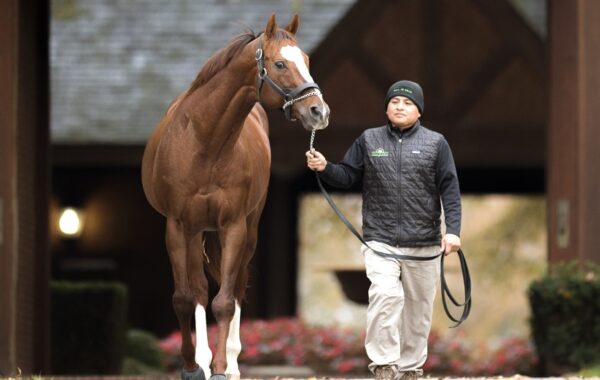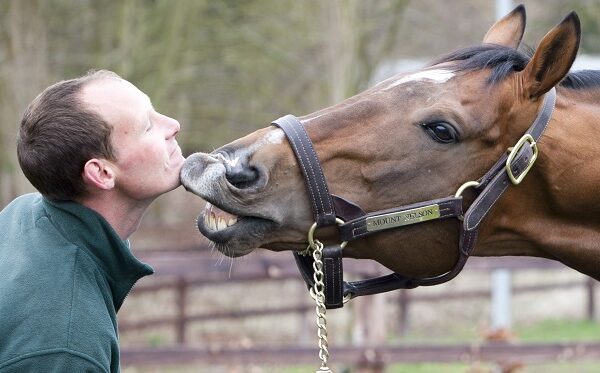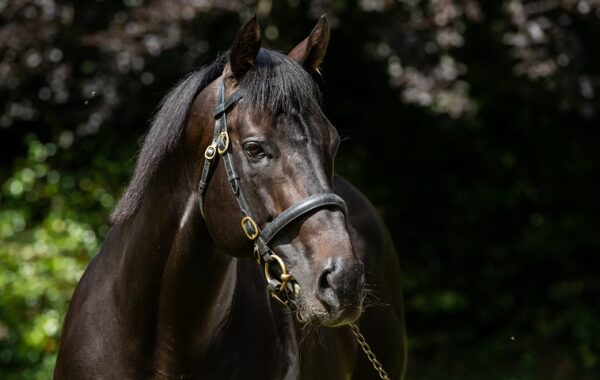When Sadler’s Wells achieved his 14th sires’ championship in 2004, I thought it unlikely that any other stallion would ever come close to matching his record-breaking achievement. I am now beginning to have second thoughts, as history seems to be repeating itself via his remarkable son Galileo.
One difference between the two that could ultimately work in Sadler’s Wells’s favour is that he was only nine when he first topped the sires’ table, whereas Galileo was ten. Both father and son then failed to take the title the following year before starting to look invincible. Galileo has now reeled off four consecutive championships, so he is hot in pursuit of his sire.
Happily, it appears that this isn’t the only area where Galileo is following in his father’s footsteps. Thanks to his first-crop son In The Wings, Sadler’s Wells soon drew attention to himself as a sire of sires, and Galileo has made faster progress in this area, thanks largely to the Classic sires Teofilo and New Approach.
Now we have the exciting prospect that Galileo is going to develop into as good a sire of broodmares as Sadler’s Wells. Remember, Sadler’s Wells was the champion broodmare sire every year from 2005 to 2011 – that’s seven consecutive titles.
The salient fact to be absorbed from that statistic is that Sadler’s Wells was 24 when he first topped the list. This is partly because a broodmare sire’s number of foals starts as a trickle and increases quite slowly for a few years. Then the numbers start to soar exponentially, as more and more daughters become broodmares and the older daughters produce more and more foals.
If you think about it, a middle-distance horse who retires at the end of his three-year-old season – as did Sadler’s Wells and Galileo – will be seven before his first runners appear. If his first-crop daughters are allowed two years on the track, the stallion will be 13 before most of his first-crop daughters are represented by their first three-year-olds.
Clearly this is a slow process but a prolific stallion can continue to make his mark long after his death, as the 2014 broodmare table highlights. As I write, Sadler’s Wells is back on top, some 33 years after his birth. Significantly, his nearest pursuer is Galileo, a comparative youngster at the age of 16 whose best previous position had been seventh in 2013.
Galileo owes his position largely to the 2,000 Guineas success of Night Of Thunder, a Dubawi colt who is the first foal of Galileo’s Listed-placed daughter Forest Storm. Of course the Anglo-Irish statistics don’t reflect the $360,000 earned by Lea, a son of the Galileo mare Greenery in winning the Grade 3 Hal’s Hope Stakes and the Grade 1 Donn Handicap in Florida. These two take the total of Group/Grade 1 winners out of Galileo mares to three, their predecessor being La Collina, who won the 2011 Phoenix Stakes and 2013 Matron Stakes.
It is important for breeders to remember that only one of these three is by a Danzig line stallion, but you would never guess this from the statistics for Galileo’s broodmare daughters.
According to Equineline, 383 daughters of Galileo have a total of 846 foals of racing age (this is an increase of 283 foals from last year’s figure of 563 – a rise of 50%, which underlines my earlier point about exponent growth). Unfortunately these figures include the southern hemisphere, where Galileo’s Australian progeny came nowhere close to matching their Irish counterparts.
I’m sure it will come as no surprise to anyone that as many as 218 of the 846 foals – more than 25% – are by sons of Danehill. Indeed, the three stallions with the highest number of foals out of Galileo mares are all sons of Danehill, with Duke Of Marmalade and Fastnet Rock sharing the lead with 28 foals each. Duke Of Marmalade’s collection includes the Irish Oaks runner-up Venus de Milo, the Group-placed Starbright and the Group-placed German filly Guinnevre.
The popularity of this cross surely owes a lot to Teofilo’s championship exploits as a two-year-old in 2006, since when the flames have been fanned by a succession of top Galileo performers out of Danehill mares, not least Frankel. The first Group winner out of a Galileo mare was sired by a son of Dansili, and the Danehill route immediately became the obvious choice.
Another 50 of the foals out of Galileo mares are by sons of Green Desert, including 18 by Invincible Spirit, 13 by Oasis Dream and another 13 by Cape Cross. Twenty are by sons of Danzig. Owners of Galileo’s Australian daughters have been turning to sons of Danehill’s champion son Redoute’s Choice, to the extent that there are 26 foals bred this way.
If I had to choose just one of these pairings, I would opt for Oasis Dream, whose record as I write stands at six winners from nine runners. Among them are the French Group 2 winner Hard Dream, the big earner Oklahoma City (TF 110) and the Listed-placed Sleeping Beauty. This combination’s trio of unraced two-year-olds are all out of stakes winners and include Almohtaseb, a Roger Varian-trained son of the 1,000 Guineas second Cuis Ghaire.
Needless to say, the Green Desert connection with Galileo has already enjoyed Classic success. Galileo’s dam produced the magnificent Sea The Stars to Green Desert’s son Cape Cross and Galileo himself sired the Oaks winner Was from a Green Desert mare. Night Of Thunder’s dam also has a pedigree containing Galileo and Green Desert, and there could easily be more Classic success in the near future, as the hot Derby favourite, Australia, is by Galileo out of an exceptional daughter of Cape Cross.
Look beyond the obvious
The problem with nicks is that they can encourage tunnel vision and I would encourage breeders to remember that Galileo’s 32 Irish-conceived Group 1 winners aren’t just about Danzig’s sons. In fact, a total of 22 broodmare sires are involved, including some rather unexpected names in Belmez, Erins Isle, Pennekamp and Presidium.
Roberto’s son Silver Hawk is the broodmare sire of three of the Group 1 winners and the Mill Reef line has also made an impact, via Shirley Heights, his sons Darshaan and Slip Anchor, and Darshaan’s son Mark Of Esteem.
Unfortunately the twin pursuits of fashion and speed mean that it isn’t easy for owners of Galileo mares to access some of these traditional classic male lines. But take a look at the pedigree of Dubawi, the sire of Night Of Thunder. His broodmare sire Deploy was by Shirley Heights out of a high-class daughter of Roberto, so it isn’t too surprising that Dubawi has done so well with a daughter of Galileo.
Dubawi also has the useful Red Galileo among his handful of runners out of Galileo mares. Dalakhani, a son of Darshaan, is the sire of Majestic Power, a 2014 two-year-old who is with David Wachman after being bought for €380,000. This filly is out of Galileo’s daughter Inchmahome.
Spare a thought, too, for Storm Cat line stallions. Galileo sired that tough filly Misty For Me from a Storm Cat mare and now his daughters are shaping up with two of Storm Cat’s grandsons, both by Giant’s Causeway. One, the American-based First Samurai, is the sire of the Grade 1-winning Lea, while Jim Bolger has trained a trio of black-type horses by Intense Focus. Perhaps Galileo’s daughters will soon come up with some talented performers by Shamardal.
Interestingly, Shadwell went to 400,000gns to buy Abhajat, a first-crop filly by Shamardal’s son Lope de Vega out of Galileo’s daughter Starry Messenger. Another high-priced 2013 yearling was Aldayha, an Acclamation filly out of Galistic who is now with Richard Hannon after being bought for €580,000. These two show that it can pay handsomely to think outside the box.





